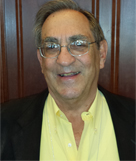
Honoring the Contributions of Tino (Constantine) Trahiotis to the Understanding of Binaural Auditory Processing
On May 6th, 2014, a special session honoring the contributions of Constantine (Tino) Trahiotis to auditory science was held at the 167th meeting of the Acoustical Society of America in Providence, RI. The session featured presentations by scientists from around the world (many of them mentees of Tino).
For more than four decades, is has been at the forefront of research in binaural hearing. His impact upon the field and his creativity are, perhaps, best known and appreciated in the context of his successful collaborations and interactions with numerous scientists worldwide who have studied binaural auditory function.
Constantine Trahiotis and Hearing Science: A Half-century of Contributions and Collaborations.
Leslie R. Bernstein, Ph.D.
Neuroscience and Surgery
UConn Health
263 Farmington Avenue
Farmington, CT 06030
les@uchc.edu
Although best known for his contributions to human binaural processing, Constantine (Tino) Trahiotis has, throughout his career, been an avid student of virtually all aspects of hearing. His published work spans nearly 50 years and has been carried out with an impressive cadre of collaborators worldwide (all of whom he thinks of as family). That body of work attests to the diversity of Tino’s interests and encompasses behavioral and lesion studies in animals, human psychoacoustics, mathematical modeling, methodology, signalprocessing, and instrumentation. Tino’s recall of the literature is legendary. As compared to the use of traditional methods to locate publications concerning a particular topic, many of us, especially the string of scientists he has mentored, know that it is often more efficient to just pick up the phone and ask Tino. This presentation traces the history of Tino’s career, including his days as a graduate student with Don Elliott at Wayne State University, his time at Indiana University, and as a Professor at the University of Illinois and at UConn Health.
Tino Trahiotis’s Impact on General Binaural Research Progress
H. Steven Colburn, Ph.D.
Hearing Research Center
and Biomedical Engineering Department
Boston University
44 Cummington Mall
Boston, MA 02215
colburn@bu.edu
The evolution of thinking and understanding in binaural hearing research over the past six or seven decades will be reviewed. Both physiological and psychophysical developments, as well as their interactions and applications, will be described. The focus of this review will be the impactful role that Tino Trahiotis played across this wide spectrum of research areas. Tino’s large impact came 2251 J. Acoust. Soc. Am., Vol. 135, No. 4, Pt. 2, April 2014 167th Meeting: Acoustical Society of America 2251 2p TUE. PM through his personal engagement with the ideas and the people involved in this research. His enthusiasm for the topic is contagious and provides fuel for digging deeper and making connections across diverse research topics. The progress has been exciting and the whole process has been great fun… consistent with the Trahiotis style.
Time and Intensity with Tino
Richard M. Stern, Ph.D.
Electrical and Computer Engineering
Carnegie Mellon University
5000 Forbes Avenue
Pittsburgh, PA 15213
rms@cs.cmu.edu
Over a period of decades Constantine (Tino) Trahiotis has been a contemplative and creative scholar, an excellent teacher, a helpful collaborator, as well as a loyal friend. Tino, along with Bob Bilger and Erv Hafter, provided this author’s introduction to the broader science of hearing beyond the particular perspective of my graduate training. At the same time, my attempts to interpret models of binaural interaction with Tino led to the review chapters on binaural modeling that the two of us jointly authored in the 1990s. Tino’s demonstration of the unexpected dependence on bandwidth of the laterality of bands of noise presented with interaural temporal differences of large magnitude motivated me to think about the tradeoff between “straightness” and “centrality,” which appears to be helpful in considering the lateralization of many binaural stimuli. Finally, Tino, along with Les Bernstein, insisted on a local implementation of my models in their laboratory which became one source (along with significant others) for the binaural modeling toolbox developed by Michael Akeroyd that is presently in wide circulation. This talk will review these facets of my life with Tino, and comment on my current perspectives on related issues.